Disclosure: This article contains affiliate links. We may earn a commission from purchases at no extra cost to you, which helps our travel content.
There's something about ancient cities that speaks to the investigative side of my nature. The layered history, the secrets hidden in plain sight, the stories etched into every weathered stone. Kairouan—Tunisia's fourth holiest city in Islam—presents exactly this kind of photographic puzzle box. Having documented architectural wonders from Dubai's futuristic skylines to Tokyo's temples, I can confidently say that Kairouan offers something uniquely captivating for the serious photographer. The city's 1,400-year history has created a visual tapestry of geometric patterns, minarets that pierce the North African sky, and courtyards where light performs a daily dance that would make any photographer weak at the knees. This isn't a destination for casual snapshots—Kairouan demands patience, respect, and technical skill. But for those willing to rise before dawn and linger until the golden hour, the photographic rewards are extraordinary. Let me guide you through the process of documenting this UNESCO World Heritage site with the eye of both an investigator and an artist.
Understanding Kairouan's Architectural Canvas
Before pressing the shutter button, I always research my subject thoroughly—a habit from my investigative days that serves me equally well in photography. Kairouan, founded in 670 CE, represents one of the earliest Islamic cities in North Africa and remains remarkably intact. The city's architectural significance lies in its pioneering role in developing the aesthetic language of Islamic art and architecture that would later spread throughout North Africa and beyond.
The Great Mosque (also called the Mosque of Uqba) stands as the crown jewel—the oldest Muslim place of worship in North Africa and a blueprint for mosques across the Maghreb region. Its distinctive features include the massive prayer hall with recycled Roman and Byzantine columns, the world's oldest surviving minaret, and a marble-paved courtyard that creates fascinating reflections after rainfall.
Beyond the Great Mosque, Kairouan offers the Mosque of the Three Doors with its richly decorated facade, the Bir Barouta well with its camel-driven water wheel, and a medina filled with ribats (fortified Islamic monasteries) and traditional homes featuring intricate doorways that make compelling photographic subjects.
For the serious photographer, I recommend investing in a comprehensive guide to Islamic architectural elements before your trip. My go-to reference has been the architectural guide, which helps me identify and appreciate the mathematical precision behind the seemingly organic patterns you'll encounter throughout Kairouan.
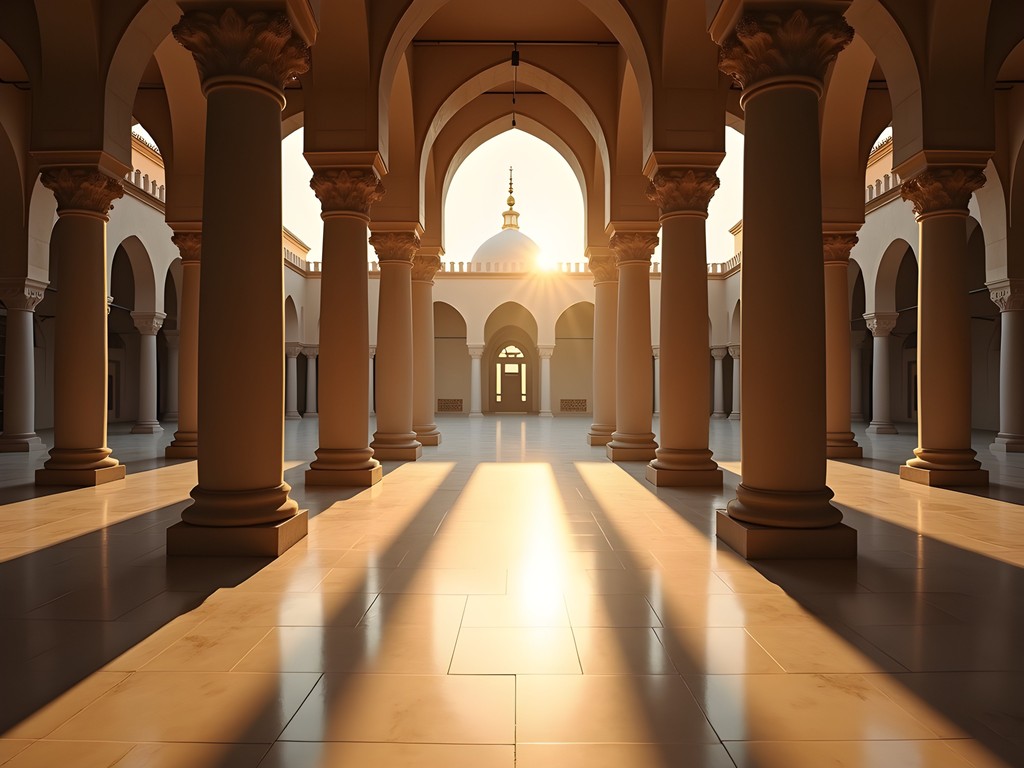
💡 Pro Tips
- Research specific architectural elements before visiting each site
- Create a shot list organized by time of day based on lighting conditions
- Learn basic Arabic terms for architectural features to better communicate with local guides
Essential Camera Gear for Islamic Architecture
My approach to gear has always been quality over quantity—something I learned during surveillance work when excess equipment only slows you down. For Kairouan, I traveled with a carefully curated kit designed to handle the specific challenges of architectural photography in varying light conditions.
My primary body is a full-frame mirrorless paired with three essential lenses: a 16-35mm f/2.8 wide-angle for capturing expansive interiors and courtyards, a 24-70mm f/2.8 for general purpose work, and a 70-200mm f/4 for isolating architectural details from a distance. The high resolution of the a7R series is particularly valuable when documenting the intricate geometric patterns and calligraphy that adorn Kairouan's monuments.
A sturdy tripod is non-negotiable—I use a carbon fiber model that balances weight with stability. Many of Kairouan's most photogenic spaces have low light levels, particularly in the early morning and late afternoon when the quality of light is most magical. Long exposures will be necessary, especially inside the prayer halls where artificial lighting is minimal.
Filters are another crucial component of my kit. A polarizer helps manage reflections on marble surfaces and enhances the rich blue of the Tunisian sky, while graduated ND filters help balance exposure between bright skies and shadowed courtyards. I also carry a set of neutral density filters for creating long exposures that blur moving elements (like tourists) while keeping architectural elements tack-sharp.
Finally, don't underestimate the importance of cleaning supplies. Kairouan can be dusty, particularly in spring when occasional sandstorms blow in from the nearby desert. A rocket blower, lens cloths, and sensor cleaning kit have saved countless shots during my week-long exploration.
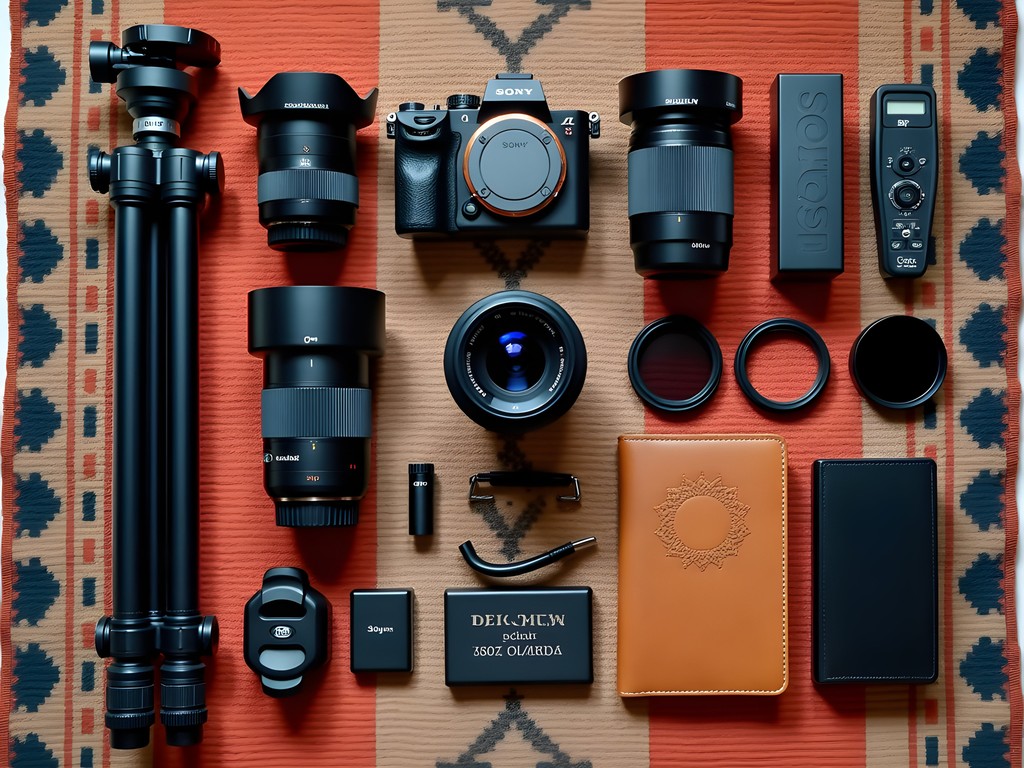
💡 Pro Tips
- Pack extra batteries—you'll be shooting all day with limited charging opportunities
- Bring a remote shutter release for vibration-free long exposures
- Consider a right-angle viewfinder attachment for low-angle shots without lying on the ground
Navigating Light and Access in Sacred Spaces
Photographing religious sites requires both technical skill and cultural sensitivity—something I've learned through sometimes awkward experiences across four continents. Kairouan presents particular challenges as a functioning spiritual center rather than merely a tourist attraction.
Timing is everything. The Great Mosque opens to non-Muslims outside of prayer times, typically from 8:00 AM to 2:00 PM, but these hours can shift during Ramadan and other religious observances. I recommend arriving when doors first open—you'll have about an hour before tour groups arrive, allowing for clean architectural shots without crowds.
Light conditions within the Great Mosque follow predictable patterns worth planning around. Morning light streams through the eastern entrances, illuminating the forest of columns in the prayer hall with dramatic shafts of light. By midday, the courtyard offers fascinating studies in contrast as the harsh overhead sun creates defined geometric shadows. Late afternoon brings a warm glow to the ancient stones as the sun lowers in the west.
As for access, non-Muslims cannot enter the prayer hall during prayer times, and some areas may be restricted entirely. Rather than seeing this as a limitation, I used it as an opportunity to focus on exterior details during these periods. The minaret, for instance, is best photographed from the streets to the northwest in late afternoon when warm light bathes its weathered surface.
A local guide can prove invaluable for both access and context. My guide, Malik, arranged special permission for me to photograph from the roof of a nearby building, offering a perspective of the Great Mosque that few visitors ever see. These connections don't happen by accident—I spent time building rapport, showing genuine interest in the history, and always respecting boundaries when told certain shots weren't appropriate.
Dress conservatively and move quietly through sacred spaces. I wear muted colors, long pants regardless of temperature, and pack a lightweight scarf that can be used to cover camera equipment when not in use, reducing my visual footprint in sensitive areas.

💡 Pro Tips
- Remove shoes before entering prayer spaces and use this moment to switch lenses and prepare settings
- Keep a prayer schedule handy to plan your shooting around religious observances
- Ask permission before photographing individuals in or near religious sites
Beyond the Great Mosque: Hidden Photographic Gems
While the Great Mosque rightfully dominates photography itineraries, my investigative instincts always push me to look beyond the obvious. Some of my most compelling images from Kairouan came from locations rarely featured in guidebooks.
The medina's network of narrow streets offers endless compositional opportunities. I spent two full mornings simply documenting doorways—each one a study in craftsmanship with hand-carved wooden panels, intricate ironwork, and weathered paint in shades of blue and green that pop against whitewashed walls. The best light for these studies comes early, before the harsh midday sun flattens textures.
The Zaouia of Sidi Sahab (commonly called the Barber's Mosque) receives far fewer visitors than the Great Mosque but offers equally stunning photographic potential. Its ceramic tile work features some of the finest examples of traditional Tunisian craftsmanship, with complex geometric patterns that make compelling macro subjects. I found myself returning three times to document different light conditions on the tiled courtyard.
For street photography enthusiasts, the souks surrounding Place des Martyrs offer rich visual storytelling opportunities. Artisans still practice traditional crafts including copper work, carpet weaving, and ceramics. Rather than quick snapshots, I spent time establishing rapport with craftspeople, which often led to invitations to document their work in more intimate settings.
One unexpected discovery came through a local contact who introduced me to a traditional carpet workshop where I was permitted to photograph the intricate process of carpet making. The rhythmic movements of the weavers' hands created compelling visual narratives when captured with my prime lens, which excels in the low light conditions typical of these workshops.
Perhaps my most unique series came from accessing the rooftops of the medina. Through arrangements with my hotel and several restaurant owners, I gained access to elevated vantage points that revealed the city's architectural rhythm—a sea of domes, minarets, and terraces best captured during the golden hour when the setting sun turns the white city to gold.
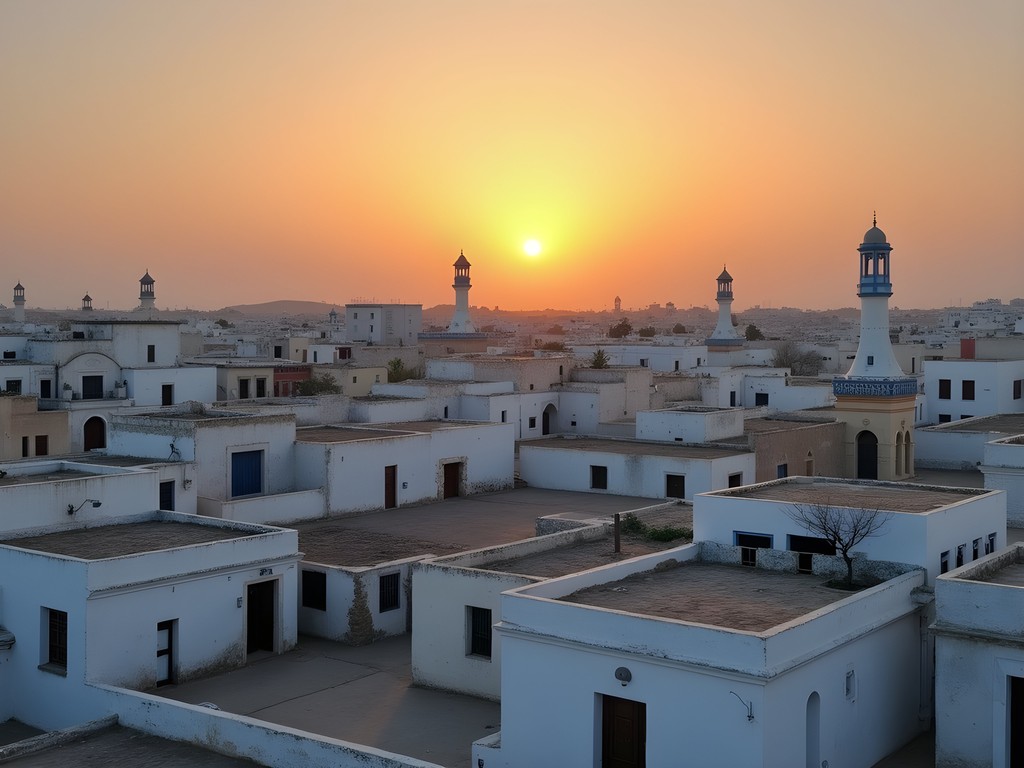
💡 Pro Tips
- Engage with shopkeepers before photographing their wares or workshops
- Look for repeating patterns in unexpected places like drain covers and window grilles
- Carry small prints of your work to share with locals who allow you to photograph them or their spaces
Post-Processing Techniques for Islamic Architecture
The distinctive qualities of Kairouan's architecture—geometric precision, subtle color palettes, and dramatic light/shadow interplay—require specific post-processing approaches to fully realize their potential. Drawing from both my investigative background (where image enhancement often revealed crucial details) and fine art sensibilities, I've developed a workflow specifically for Islamic architectural photography.
First, I always shoot in RAW format to preserve maximum data for post-processing. Kairouan's high contrast situations—bright courtyards adjacent to dim interiors—demand careful exposure blending. I routinely bracket exposures (3-5 stops apart) when shooting in these challenging conditions, later combining them using luminosity masking techniques rather than standard HDR, which can produce unnatural results.
Color accuracy presents another challenge. The subtle cream, ochre and sienna tones of ancient stonework require precise white balance adjustment. I carry a color calibration tool which has proven invaluable for establishing accurate color references, especially when shooting in the mixed lighting conditions common in partially enclosed spaces.
For images of geometric patterns and symmetrical architectural elements, I employ careful perspective correction in post-processing. Even slight keystoning can undermine the mathematical precision that makes Islamic geometric design so compelling. I use the transform panel extensively, often creating virtual copies with different perspective corrections to find the most visually balanced result.
Detail enhancement requires a nuanced approach. The weathered textures of ancient columns and carved plasterwork tell stories of centuries past, but heavy-handed clarity or texture adjustments can create an artificial appearance. I prefer selective dodging and burning techniques to enhance three-dimensionality while maintaining a natural look.
Finally, I've created custom presets for different Kairouan lighting scenarios—morning prayer hall, midday courtyard, golden hour exteriors—each designed to preserve the authentic atmosphere while optimizing technical quality. These aren't one-click solutions but starting points that respect the unique character of each location while maintaining consistency across my portfolio.
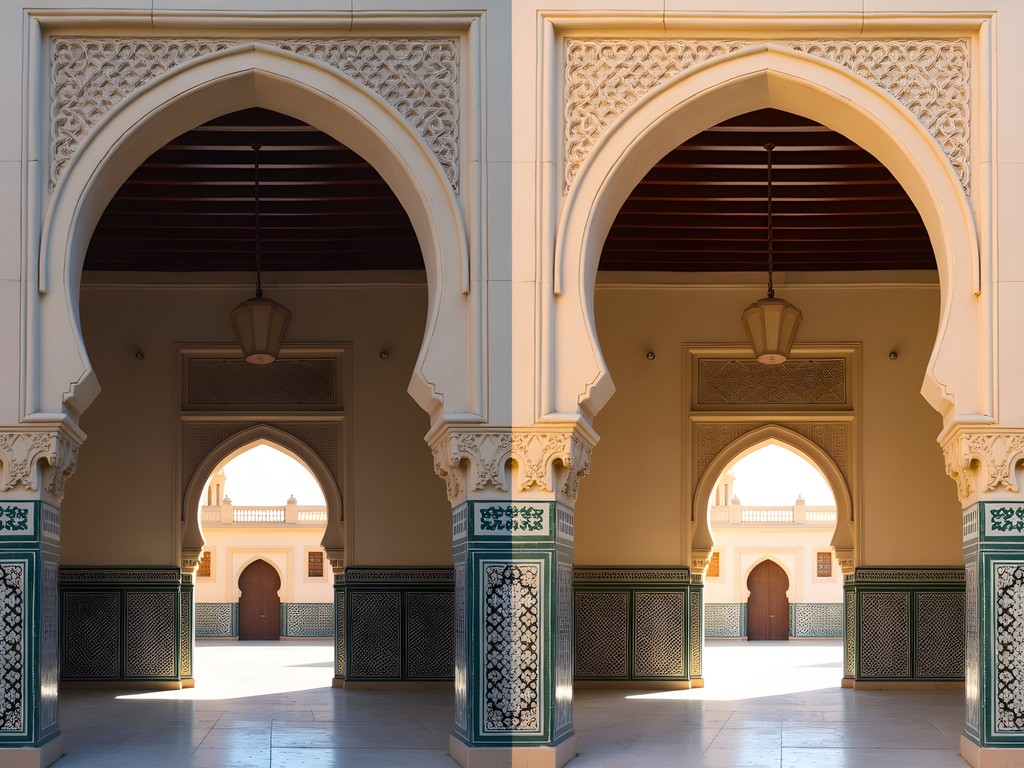
💡 Pro Tips
- Create location-specific presets based on your first day's shooting
- Use radial filters to subtly enhance light beams in interior shots
- When processing pattern-heavy images, check at 100% zoom to ensure clarity without moiré patterns
Final Thoughts
Kairouan rewards the patient, observant photographer who approaches the city with both technical skill and cultural respect. After a week immersed in its visual language, I left with not just a portfolio of compelling images but a deeper understanding of Islamic architectural principles that continue to influence my work across continents. The city operates on a different rhythm than many tourist destinations—one that aligns perfectly with the methodical, detail-oriented approach I've carried from my investigative work into photography. Whether you're documenting the mathematical precision of centuries-old geometric patterns or capturing the human stories that unfold in the medina's winding streets, Kairouan offers endless visual narratives waiting to be revealed. Pack your gear thoughtfully, rise before the crowds, and prepare to see this UNESCO World Heritage site through a lens that appreciates both its historical significance and its living traditions. The images you create here will challenge and expand your photographic vocabulary in ways few other destinations can match.
✨ Key Takeaways
- Timing is crucial—plan shoots around prayer times and arrive early to avoid crowds
- Light in Kairouan follows predictable patterns that can be mapped and leveraged for dramatic architectural photography
- Building relationships with locals can unlock access to unique perspectives and hidden locations
- Post-processing should enhance rather than transform the authentic character of Islamic architecture
📋 Practical Information
Best Time to Visit
March-May (spring) for optimal light and comfortable temperatures
Budget Estimate
$75-150 per day including mid-range accommodations, meals and local guides
Recommended Duration
5-7 days minimum for comprehensive photography coverage
Difficulty Level
Moderate (Requires Early Mornings, Cultural Navigation, And Technical Photography Skills)

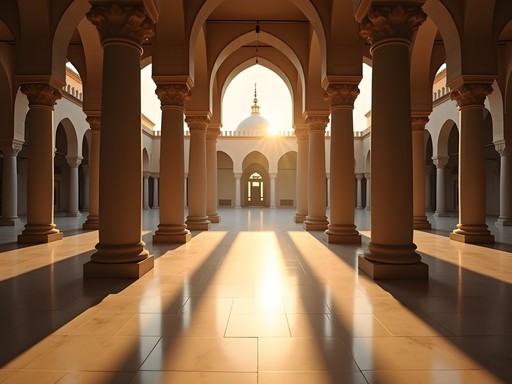
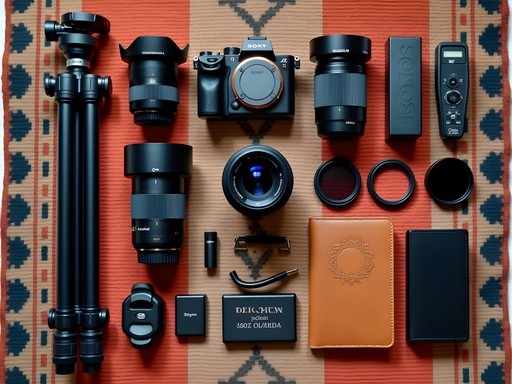
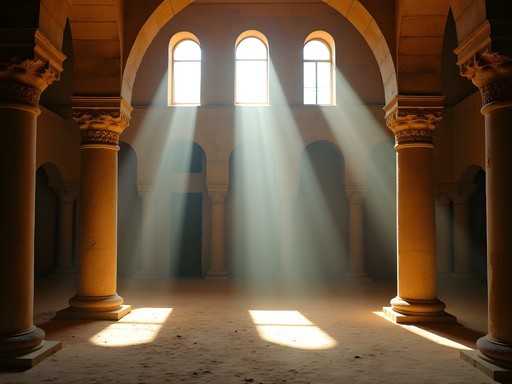
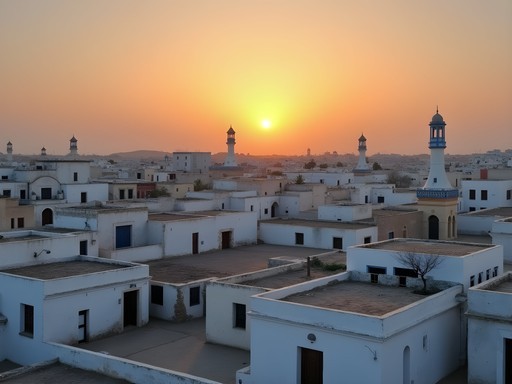
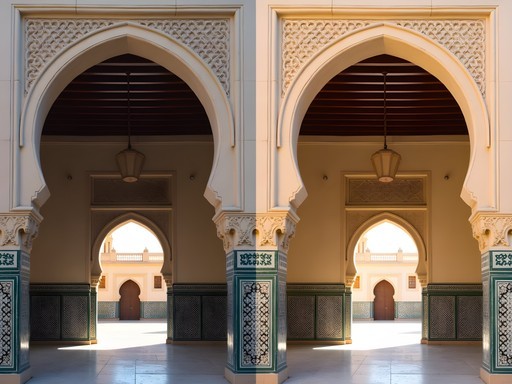


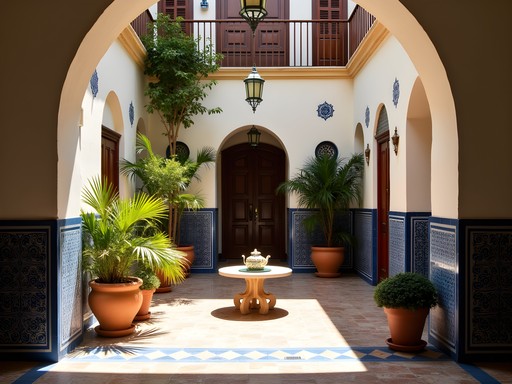






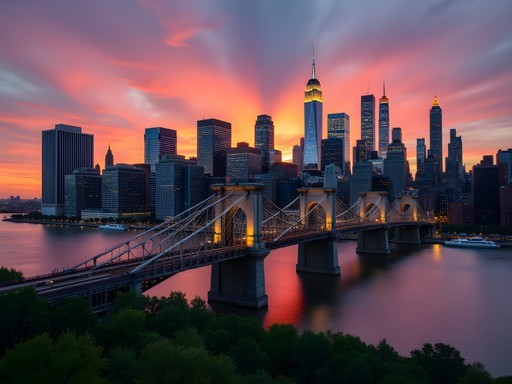
Comments
Bryce Diaz
Douglas, this guide is exactly what I needed! I visited Kairouan last year but struggled with capturing the intricate details of the architecture. The lighting was particularly challenging in the medina alleyways. Your section on 'Navigating Light' is spot on - those golden hour shots of the minarets are spectacular. One tip I'd add for fellow photographers: the locals I met were generally welcoming, but I found it helpful to learn a few Arabic phrases to ask permission before photographing people or their shops. Also, I used my wide angle lens for most architectural shots, which was perfect for capturing those narrow spaces while maintaining detail. Did you make it to the Bir Barouta well? That place has fascinating light patterns mid-afternoon that create some magical photo opportunities.
Douglas Murray
Thanks Bryce! You're absolutely right about learning a few Arabic phrases - it opens so many doors. And yes, I did visit Bir Barouta! Those light patterns you mentioned were stunning. I actually have a whole folder of shots from there that didn't make it into the final post.
travelone4358
What are the best Arabic phrases to learn for this? I'm making a note for my trip!
Bryce Diaz
@travelone4358 'Mumkin sura?' (May I take a photo?) was the most useful one for me. Also 'shukran' (thank you) and 'jamila' (beautiful) go a long way!
travelone4358
Amazing photos! The lighting in that Great Mosque shot is incredible. Did you need special permission to shoot inside?
Douglas Murray
Thanks! Yes, for interior photography I had to get advance permission from the mosque administration. They're generally accommodating if you explain your purpose and show respect for the space.
travelone4358
Good to know, thanks! Planning a trip there next spring.
Bryce Diaz
Douglas, your section on 'Hidden Photographic Gems' was spot on! When I visited Kairouan last year, I stumbled upon that small workshop where artisans were hand-carving traditional wooden panels. The craftsman let me photograph his entire process after I showed genuine interest and bought a small piece. Also worth noting for photographers: the Bir Barouta well has fascinating lighting challenges with the indoor/outdoor contrast, but catching the camel turning the water wheel in that dappled light made for one of my favorite shots from Tunisia. Did you make it to the rooftop of the Madina guesthouse? The owner gave me access at sunset and the panoramic view of all those minarets was breathtaking.
skyace
Bryce, that rooftop tip is gold! Adding it to my notes for when I visit.
Douglas Murray
Bryce, I did make it to that rooftop! Absolutely magical. I didn't include it in the post because the owner mentioned he's getting too many requests lately. But you're right about Bir Barouta - those light/shadow contrasts were challenging and rewarding.
roamhero
Been there last year! The light at sunrise hitting the minarets is incredible.
photoclimber
What lens did you primarily use for the interior architecture shots? I struggle with capturing the scale and details of these spaces without a super wide angle.
Douglas Murray
I mostly used my wide angle lens for interiors, which gave me enough width without too much distortion. For the detailed shots of the mihrab and minbar carvings, I switched to a 24-70mm. A tripod is essential for the dimly lit areas!
photoclimber
Thanks! I've been looking for a new wide angle actually. Did you find yourself needing a polarizing filter for any of the shots?
Douglas Murray
Yes, a polarizer helped tremendously with the courtyard shots to manage reflections on the marble and enhance the blue sky. Inside, I typically removed it to maximize light.
skyace
Your photos are absolutely stunning! The way you captured the light filtering through those carved windows in the Great Mosque is magical. I've been wanting to visit Kairouan for years, and this post just moved it to the top of my list!
springmate
Great post! I'm heading to Tunisia next month and definitely want to visit Kairouan. Did you need any special permission to photograph inside the Great Mosque or other religious sites?
Douglas Murray
Thanks for asking! For the Great Mosque, you'll need to purchase a photography permit at the entrance (about 5 dinars extra). For smaller mosques, always ask the caretaker first - I found most were welcoming when approached respectfully. Remember to dress modestly and avoid photographing people praying.
springmate
That's super helpful, thanks! Will definitely follow your advice about being respectful.
citylover
What time of year did you visit? Wondering about the crowds and best season for photography.
Douglas Murray
I was there in late October - perfect weather (not too hot) and fewer tourists than summer. The light was beautiful, especially in the late afternoon. Just avoid Fridays when some sites have limited access due to prayers.
citylover
Perfect, thanks! Will plan for October then.
Nicole Russell
Douglas, this guide is EXACTLY what I needed! I'm heading to Tunisia next month and Kairouan is top of my list. I especially appreciated your section on 'Hidden Photographic Gems' - those smaller mosques and madrasas are often overlooked but make for such intimate photos. Did you find the locals were open to you photographing everyday street scenes? I'm always nervous about crossing cultural boundaries when shooting in more conservative areas.
Douglas Murray
Hi Nicole! For street photography, I found starting with market vendors rather than random pedestrians worked best. Many were happy to be photographed once I bought something small. The carpet workshops were particularly photogenic and welcoming. Just be mindful around women and always ask first. Enjoy your trip!
beachvibes
Your photos are absolutely stunning! The detail you captured in the minaret carvings is incredible.
Venture X
Premium card with 2X miles, $300 travel credit, Priority Pass